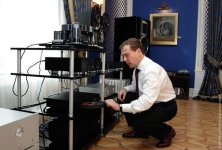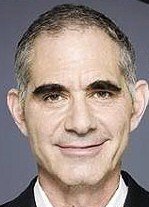Tantalum was KING in the late '60's through the 70's. They were compact, and available.
However, in this time, they changed from being used with DC bias, to no DC bias, as bipolar power supplies became more frequent in audio designs. Yes, single supplies were the popular in the '60's, even with pro equipment. This is when non-linear distortion became significant in tantalum caps. Interestingly enough, aluminum caps did not suffer this problem. Later, DA was found to be significant in aluminum caps and tantalum caps, as well as most ceramic caps, and this became a good reason to eliminate ALL large coupling and feedback caps, if possible. Still good design practice, today.
Somewhere around 1980, problems due to tantalum scarcity shifted interest to aluminum caps from Japan, which were much improved over early aluminum caps. We tend, today, to use premium Japanese aluminum caps, in our best designs, when we need a large value polarized cap.
However, in this time, they changed from being used with DC bias, to no DC bias, as bipolar power supplies became more frequent in audio designs. Yes, single supplies were the popular in the '60's, even with pro equipment. This is when non-linear distortion became significant in tantalum caps. Interestingly enough, aluminum caps did not suffer this problem. Later, DA was found to be significant in aluminum caps and tantalum caps, as well as most ceramic caps, and this became a good reason to eliminate ALL large coupling and feedback caps, if possible. Still good design practice, today.
Somewhere around 1980, problems due to tantalum scarcity shifted interest to aluminum caps from Japan, which were much improved over early aluminum caps. We tend, today, to use premium Japanese aluminum caps, in our best designs, when we need a large value polarized cap.
Thanks, HHoyt, I just printed out the cap article that you linked. Of course, I read it several times, over the decades, BUT I doubt that very many people have done so on this website, and it IS strong evidence as to why caps often sound different, EVEN caps with similar materials in their construction.
Does he really look like this? :
Intersil/D2Audio Joins Forces with Mark Levinson
What I love about this article is that Mark Levinson make what in my view is the most outrageously overspecified amp - the No.33. And now Mark Levinson is involved with a venture where, they claim -
...equipment designers can say goodbye to the bulky heat sinks, overbuilt power supplies, and wasted energy associated with analog amps...

Intersil/D2Audio Joins Forces with Mark Levinson
What I love about this article is that Mark Levinson make what in my view is the most outrageously overspecified amp - the No.33. And now Mark Levinson is involved with a venture where, they claim -
...equipment designers can say goodbye to the bulky heat sinks, overbuilt power supplies, and wasted energy associated with analog amps...
Abrax... in all fairness to Mark, you are mixing apples with oranges. An 'overbuilt' conventional power amp performs better than an 'underbuilt' conventional power amp. Kind of like a Renault Dauphine vs a 60's Buick. Both will get you down the road. Mark is apparently doing switching amp-power supply design marketing. Kind of a different animal, isn't it?
We find this used, even today. Tantalum was even WORSE than aluminum. I made the same oversight, myself, in the Levinson JC-2.
I've still got my JC-2.
John, it would seem that there's still some confusion over Mark Levinson (the man) and the company by the same name.
Best Regards,
TerryO
John - again, a distortion of your perception. And perhaps that of TerryO too. Perception is reality
Evidently, your perception is that you're right.
The reality is that you're not.
It ain't what you don't know that gets you into trouble.
It's what you know for sure that just ain't so.
Mark Twain
Evidently, your perception is that you're right.
Wrong. What's apparently evident to you is nothing more than your perception.
The reality is that you're not.
By which you mean your perception is I'm not. Perception is reality, remember?
Misinformation, in any form, is not appreciated on this forum, if I can help it.
The key point there John is 'if I can help it'. When a person's perception is distorted, they can't help it - at least in the short-term. Their reality is shifted, that's how things are for them. In the longer term, they can work to correct those distortions, when they're pointed out or because they're motivated to self-develop.
Does he really look like this?
Writing books does seem to keep looks in shape.
Attachments
Abrax..., I presume that you think that my OPINIONS on audio reproduction are distorted. I am referring to slandering another person's actions. Your comment implied that Mark Levinson, the man, was involved with the ML 33 power amp, and I can't see how he could have been, since he left the company, years before, so far as I can tell. HK is mostly responsible for the 33, not Mark Levinson, the man, as they marketed it overseas, to the best of my knowledge. I might also be responsible for the CLASS A aspect of the design, as I designed the JC-3, which became the ML-2. It was the largest amp for its power rating, in the industry, so far as I know, for some time.
- Status
- Not open for further replies.
- Home
- Member Areas
- The Lounge
- John Curl's Blowtorch preamplifier part II

